The right to digital integrity has gained momentum in national and international discussions on how fundamental rights should address the threats that have emerged from digital technologies. At the Council of Europe, the Ad-Hoc committee on artificial intelligence (CAHAI) has discussed the idea of a right to digital integrity as part of its new legal framework on AI. In Switzerland, there was a proposal to incorporate this idea into a cantonal constitution (Valais) and it is also the subject of a constitutional initiative at the federal level, which will be launched by the “Association pour la reconnaissance et la protection de la vie numérique”. The text (still in preparation) asks to amend Article 10 of the Swiss Constitution (the right to life and to personal freedom) by adding to its second paragraph: “Every person has the right to personal liberty and in particular to physical, mental and digital integrity and to freedom of movement”.
The right to digital integrity should be understood as a new piece in the evolving net of relations between different rights and would mainly contribute to an improved consistency between them. The right to digital integrity establishes an important link between the protection of dignity, the protection of individual freedom, and the rights of privacy and informational self-determination. It would require administrative and judiciary actors to take up an explicit position on the manner, in which the capacity of individuals to act freely in a context of pervasive digital technologies should be protected. In other words, the right to digital integrity both defines a substantial benchmark of freedom in the face of technology and operationalizes its protection.
Digital integrity is not an ontological claim about some digital self that warrants protection the way the mental or physical self does. The objective is not to protect a digital avatar, but rather to protect the capacity of individuals to act as free persons when they use digital technologies. When using digital technologies, the danger is not that a digital “self” is threatened, but rather that activities carried out through the use of technologies could threaten the bodily and mental integrity of an individual.
Protecting digital integrity has three main elements:
a. the capacity of individuals to use digital technologies
This first element bears upon the capacity of individuals to access digital technologies such as the Internet and other gateways to digital opportunities. This is part of a broader ambition to secure access to key infrastructures (historically these included for example water, electricity and mobility) and to give individuals the required competences to use these technologies (thereby addressing the generational and social “digital divide”). Interestingly, this also includes access to platforms which prove essential for specific activities (such as professional activities in the “gig economy” or social platforms used for political discussions).
b. essential interests as a subject of digital technologies
This second element focuses on the individual as a “user” of digital technologies. The user should be protected from being monitored, tracked and harmed when using digital technologies (with practices ranging from surveillance to cyber-bullying and cyber-stalking). Most importantly in this category, digital integrity is also about protecting one’s digital identity as a key element of the capacity to act freely.
c. essential interests as an object of digital technologies
The third element focuses on the individual as the “object” of digital technologies. Here, the focus is on protecting individuals from being monitored and tracked by technologies (e.g. video surveillance and measurement devices of the “smart home” or “smart city”). It highlights new kinds of threats that have emerged from digital technologies used for surveillance purposes, especially by a public authority.
In a nutshell, the protection of digital integrity aims to extend the protection of individuals in their capacity to act as free persons. Digital integrity serves to promote a substantial definition of what freedom should be about and how this freedom relates to the protection of privacy in informational matters. Digital integrity does not claim to solve all the disputes related to the definition and scope of freedom in the context of technologies – instead, it claims to be the norm which gives structure to these disputes and on which the results of these disputes should converge.
For more information, see Rochel Johan, Connecting the Dots: Digital Integrity as a Human Right, Human Rights Law Review, vol. 21, issue 2, 2021, p. 358-383.
Suggested citation: Rochel Johan, Digital integrity – A new lens through which to assess the impact of digital technologies, Blog of the LexTech Institute, 4th May 2021
Author(s) of this blog post

Johan Rochel
Dr Johan Rochel is lecturer at the EPFL (College of Humanities) and at the University of Zürich (Faculty of Law). He is the founder and co-director of “ethix – lab for innovation ethics”.

